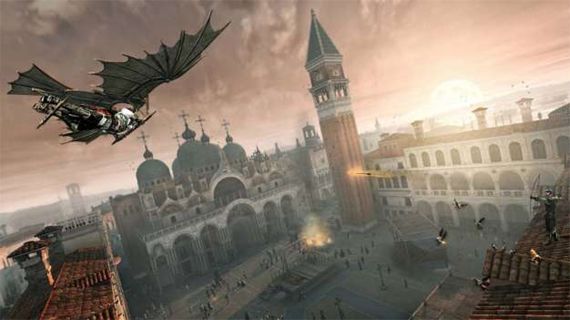
Heaven forbid The Architect’s Journal from making a serious article about the architecture of computer games. No doubt they would be prohibited from using the architect's secret handshake ever again. Fortunately I'm here to save the day with my own scoop on the 10 greatest architectural achievements in video game history, after the jump. Click to expand. [+/-]
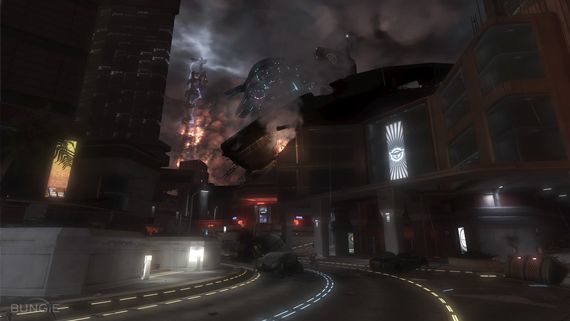
10: Halo.
The original Halo introduced the player to an artificial planet of unknown alien origin, a gigantic space arc with an external living ecosystem and a complex web of underground tunnels. Later games in the Halo franchise would also introduce the setting of New Mombasa, a mega-city located on Mombasa Island in Kenya, the World’s busiest sea port of the 24th century and Earth’s first Space Elevator city.

9: Tomb Raider.
Tomb Raider revolutionized the 3D genre, becoming one of the most successful gaming franchises of all time. From the lost tombs of Qualopec in Peru to the City of Khamoon in Egypt, the original title of the series presented some of the most memorable built environments ever seen in a videogame.

8: The Elder Scrolls IV: Oblivion.
The fantastic province of Cyrodiil is one of the largest virtual environments created for a game, allowing the player to travel freely in over 40 km2 of open landscape and marvel at the extensive views of distant towns and mountain ranges.
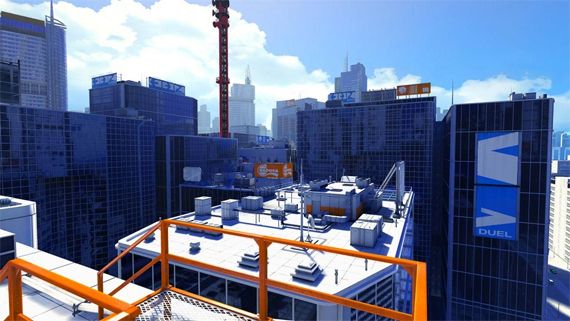
7: Mirror’s Edge.
Mirror’s Edge is set in a futuristic dystopian city dominated by a totalitarian regime. It’s gleaming, clean environment is hampered by the presence of invasive surveillance, tracking all forms of electronic communication in order to reduce crime to nearly nonexistent levels.
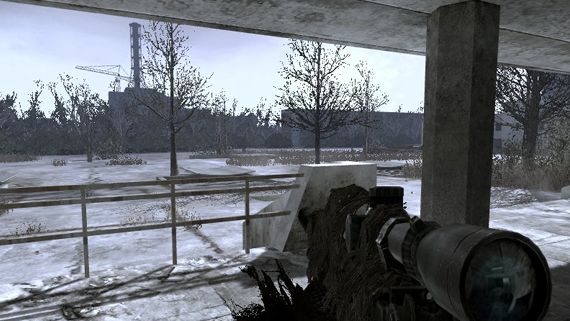
6: Modern Warfare (Prypiat/Chernobyl).
The city of Prypiat was founded in 1970 to house the Chernobyl Nuclear Power Plant workers. It was abandoned in 1986, following the events of the Chernobyl disaster. The ghost city is portrayed in the game Modern Warfare as a gloomy, dark, lonely and scary place with gray skies and long, unkempt grass.
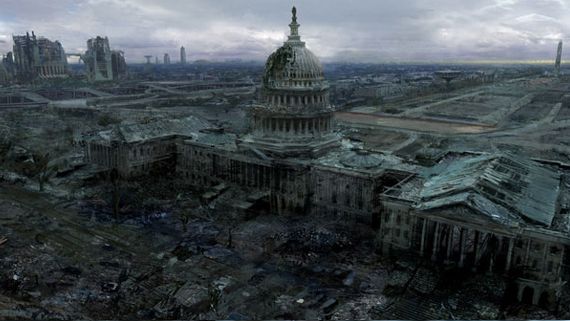
5: Fallout 3 (Washington D.C.).
Fallout 3 takes place in the year 2277, 200 years after a nuclear war. The game is set in a post-apocalyptic version of Washington D.C., taking the player on a journey through an area known as the Capital Wasteland.
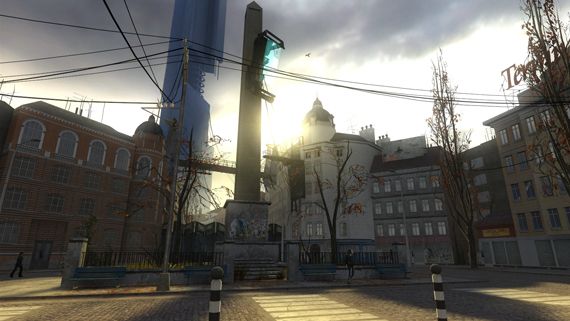
4: Half Life 2 (City 17).
City 17 is a metropolitan area in Eastern Europe that forms the primary setting for Half-Life 2. The city features a variety of architecture types, from mostly Eastern European architecture dating from pre-World War II neoclassicism, to post-war revival of classical designs, Soviet Union modernism, and post-Soviet contemporary designs, as well as alien structures. The city is quite large, consisting of a railway station, a dilapidated canal system, underground road tunnels, and multiple communal living quarters and buildings.
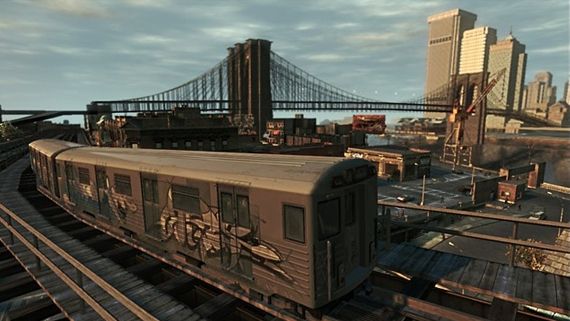
3: GTA IV (Liberty City).
Liberty City is a fictional city portrayed as a generic version of the metropolitan area of New York. The city’s geography and alignment of districts features two major mainlands with a Manhattan-like central island (which contains a large park at the center, a reference to Central Park), and several smaller islands connected primarily by road bridges. Train services with lines running in the city are also present, providing GTA IV with one of the most convincing, living urban environments ever created for a video game.
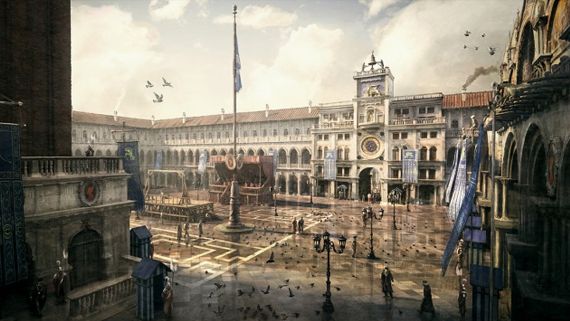
2: Assassin’s Creed II (Florence, Venice).
Assassin's Creed II takes place in an open world with nonlinear gameplay, allowing the player to roam freely within several regions throughout late 15th century Italy such as Venice, Florence, and the Tuscan countryside. With its focus on real-world locales like The Duomo in Florence or Piazza San Marco in Venice and historical figures like Lorenzo di Medici and Leonardo da Vinci, this game offers an evocative setting filled with visual details that infuse the world with life and elegance.
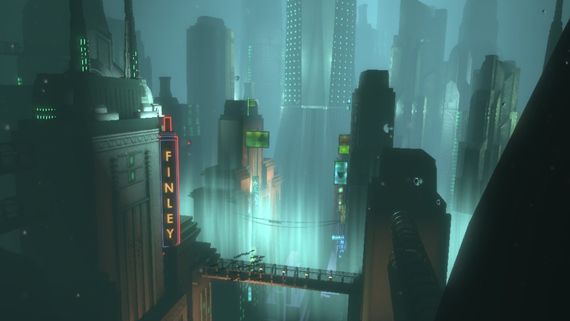
1. Bioshock (Rapture).
Rapture is a massive underwater city that lies at the bottom of the Atlantic Ocean. Created by a fictional business magnate called Andrew Ryan, it is a utopian metropolis of Art Deco-styled buildings connected by a network of glass tunnels and a Bathysphere system. The city is completely self-sustaining, and all of its electricity, food, water and air purification are powered by the volcanic vents originated from the bottom of the sea. Rapture is intentionally isolated from the world, and the only way to access it seems to be bathyspheres taken down from the lighthouse perched on an island above. Bioshock presents a fantastically speculative world that is both a shining example of science-fiction and a brilliantly drawn architectural world.
Interesting links:
Sightseeing in Liberty City: Liberty City vs. New York City, A photoset showing the similarities between Grand Theft Auto 4 and real life, Flickr.
Game / Space, an interview with Daniel Dociu, BLDGBLOG.
Evil Lair: on the architecture of the enemy in videogame worlds, BLDGBLOG.
Los Angeles: Grand Theft Reality, City of Sound.
Visualizing Geographic Environments: City 17, Digital Urban.
Cities in Games: Chernobyl in Call of Duty 4, Digital Urban.
The Role of Architecture in Video Games, Gamasutra.
Videogames and architecture, Polygon Web.
![[a barriga de um arquitecto]](https://blogger.googleusercontent.com/img/b/R29vZ2xl/AVvXsEh4jxSFgS7aN5np9gNAv5D6FLs8GihH_1lu1XrTdi7CmZ6DwtdH1DQ7u6RQnN6SosH_HFrY3YQzoLlvzBeEK-cxh0dveIqPEsEC661K_iPUh0NifbNNN-mRoy6nVc0ycEi972Llyg/s1600/bA_LOGO_MOCHA_2016_650.jpg)

e The Getaway? ainda não havia streetview, no google maps, e já o jogo reproduzia londres ao detalhe...
ResponderEliminar